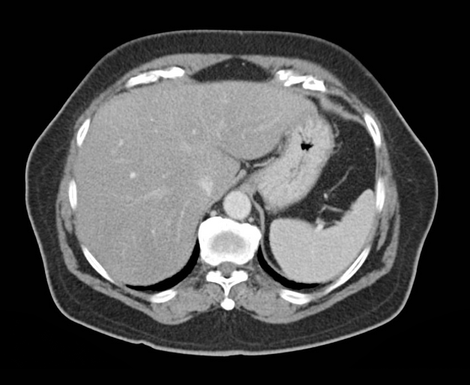Prostate cancer often shows no symptoms in early stages. Learn why screening from age 50 is crucial—and how early detection can save your life.
More diagnoses, better chances of recovery
Prostate cancer is one of the most common types of cancer among men aged 50 to 70—and a key focus in the field of urology. As part of the male reproductive system, the prostate plays an essential role in fertility and sexual function. Prostate cancer is rare in men under the age of 40, but around 60% of cases are diagnosed in men over 65, meaning that the risk of prostate cancer increases significantly with age.
In Switzerland, approximately 7,400 men are diagnosed with prostate cancer each year. According to the German Cancer Society, the number of diagnoses has steadily increased over the past 30 years. However, this doesn’t necessarily indicate a rise in the actual number of cases, but rather reflects improved early detection methods. Thanks to regular check-ups, more men are diagnosed early enough to receive timely treatment and maintain their quality of life.
Read on to learn more about the warning signs of prostate cancer and why regular screening tests are so important.
Risk factors and higher risk groups
Besides age, other factors can increase the risk of developing prostate cancer:
- Family history: Men with a father or brother who had prostate cancer are at higher risk.
- Ethnicity: Prostate cancer occurs more frequently and tends to be more aggressive in men of African descent.
- Genetics: Certain inherited gene mutations (e.g., BRCA1 or BRCA2) may increase risk.
- Lifestyle factors: Diet, obesity, and exposure to certain chemicals might contribute, though evidence is still emerging.
What are the typical symptoms of prostate cancer?
The prostate – a small, walnut-sized gland found only in men – sits just below the bladder and surrounds the urethra. Over the course of a man’s life, the prostate can be affected by various conditions, including prostate cancer.
Prostate cancer staging helps determine how far the cancer has grown or spread and guides treatment decisions. It typically ranges from:
- Stage I and II (early/localized cancer): Cancer is confined within the prostate gland.
- Stage III (locally advanced): Cancer has spread just outside the prostate into nearby tissues.
- Stage IV (advanced/metastatic): Cancer has spread to distant parts of the body, such as lymph nodes, bones, or other organs.
The following symptoms may be signs of the disease:
Symptoms of early-stage prostate cancer
In its early stages, prostate cancer often causes no noticeable symptoms. However, the first signs of early prostate cancer can include changes urinary symptoms. An enlarged prostate can press against the urethra, disrupting the flow of urine. This may lead not only to incontinence, but also to a range of other issues, such as:
- Weak or interrupted urine stream
- Frequent urge to urinate, especially at night
- Difficulty starting or stopping urination
- Feeling that the bladder isn't completely empty
- Urinary retention (inability to empty the bladder)
- Urinary incontinence
Symptoms of advanced prostate cancer
As the cancer progresses, it may grow into surrounding tissue and damage blood vessels in the prostate or seminal vesicles. A growing tumor can also narrow the urethra and affect the flow of semen, potentially causing changes in the consistency or appearance of ejaculate.
Nerves in the area may be compressed or damaged, which can affect sexual function. Prostate cancer also has a tendency to spread (metastasize) to the bones – particularly in the spine, pelvis, and ribs – where it can weaken the bone structure and cause significant pain.
In advanced stages, the following symptoms may occur:
- Blood in the semen
- Painful ejaculation
- Blood in the urine
- Pain in the pelvic area, hips, or lower back
- Bone pain (in metastatic prostate cancer), caused by cancer cells invading the bone and releasing substances such as osteoclast-activating factors, which accelerate bone breakdown. Metastases may also press on surrounding tissue, leading to severe pain.
- Erectile dysfunction
- Impotence
What Is Benign Prostatic Enlargement?
The symptoms mentioned above aren’t always caused by a malignant tumor. As men age, many experience a benign enlargement of the prostate due to hormonal changes and growth factors.
This condition is known as benign prostatic hyperplasia (BPH). The likelihood of developing BPH increases significantly with age: around 50% of men between the ages of 51 and 60 are affected, rising to 70% in men aged 60 to 69, and up to 80% in men over 70.
Although BPH is not cancer, it can cause symptoms similar to those of prostate cancer. Likewise, prostatitis (inflammation of the prostate) may lead to similar complaints.
How Is Prostate Cancer Screening Done?
If you notice several of the symptoms described above or would like to have your prostate checked as part of a routine screening (recommended from age 50), a urologist will usually carry out the following tests:
- Medical history (anamnesis):
In an initial consultation, the doctor will ask about your general health, any family history of prostate disease, and current symptoms. - Digital rectal exam (DRE):
This physical examination involves the doctor using a gloved finger to feel the prostate through the rectum. They will assess the size, shape, and consistency of the gland and check for any abnormalities.
Note: Although prostate cancer typically does not affect the testicles, a urologist may also briefly examine the testicles and surrounding structures to check for other conditions, such as testicular cancer, cysts, or varicoceles. This is not a routine part of prostate cancer screening, but it may be included if there are related symptoms or concerns.
- PSA test:
The PSA (prostate-specific antigen) test measures the level of PSA, a protein produced by the prostate, in your blood. Elevated PSA levels may indicate prostate cancer, but can also result from BPH or prostatitis.
Studies have shown that PSA-based screening can reduce prostate cancer mortality by up to 20%. However, it’s important to note that PSA screening may also lead to overdiagnosis and overtreatment.
If the DRE reveals abnormalities or if the PSA level is elevated, further tests may be required to determine the cause:
- Transrectal ultrasound (TRUS):
TRUS uses sound waves to create an image of the prostate. It can detect changes such as calcifications or irregularities in prostate size that might indicate cancer. TRUS is often used in combination with a prostate biopsy.
However, TRUS cannot reliably distinguish between benign and malignant changes, and small tumors may be missed. - Prostate biopsy:
A biopsy involves taking small samples of prostate tissue, usually during a TRUS exam, for microscopic analysis. This is currently the only definitive method for diagnosing prostate cancer. - Multiparametric magnetic resonance imaging (mpMRI):
MRI is an imaging technique that can provide a detailed view of the prostate. One study investigated whether mpMRI prior to biopsy could improve cancer detection rates. The results showed that MRI scans detected clinically significant prostate cancer more frequently than traditional TRUS biopsy (93% vs. 48%).
However, MRI also more often identified cancers that did not require treatment. Notably, MRI helped avoid unnecessary biopsies in 27% of cases. - Stockholm3 test:
The Stockholm3 test is a relatively new method for early detection of prostate cancer. It combines various biomarkers to assess a man’s risk of having prostate cancer.
In addition to PSA, it measures other proteins such as free PSA and p2PSA, as well as genetic markers linked to increased cancer risk. A risk algorithm then calculates an individual’s likelihood of having aggressive prostate cancer, taking into account clinical data such as age, family history, and DRE findings.
Treatment Options for Prostate Cancer
Prostate cancer treatment typically involves a multidisciplinary oncology team, including urologists, radiation oncologists, medical oncologists, and radiologists. The optimal therapy depends on several factors, particularly the stage of the cancer, the Gleason score (which indicates how aggressive the tumor is), and the patient’s overall health.
- Active Surveillance:
For slow-growing, early-stage prostate cancer, immediate treatment may not be necessary. Instead, the tumor is closely monitored through regular PSA tests, digital rectal exams (DRE), and biopsies. Treatment is only initiated if the cancer shows signs of progression.
A cohort study on active surveillance found that 10 years after diagnosis of prostate cancer, 49% of men required neither treatment nor showed disease progression. Less than 2% developed metastases, and fewer than 1% died from prostate cancer. - Surgery:
Studies show that men with clinically localized prostate cancer can benefit from radical prostatectomy (complete surgical removal of the prostate). On average, this procedure resulted in a life expectancy gain of 2.9 years.
However, due to potential side effects such as erectile dysfunction and urinary incontinence, there has been a growing trend toward less invasive approaches, such as active surveillance—especially in older men and those with low-risk tumors. - Radiation Therapy:
Radiation therapy uses high-energy rays to target and destroy cancer cells. There are different types, including external beam radiation therapy and brachytherapy (internal radiation therapy). - Hormone Therapy:
Hormone therapy reduces or blocks the effects of male sex hormones (androgens), which fuel the growth of prostate cancer cells. It is often used in combination with other treatments—before radiation therapy, for example, or after surgery. - Chemotherapy:
Chemotherapy uses drugs to kill cancer cells and is typically reserved for cases where the cancer has spread (metastasized) and other treatments are no longer effective. - Focal Therapy:
Focal therapy targets only the cancerous area of the prostate, preserving the rest of the prostate gland. It typically involves ablative techniques that destroy tumor tissue with minimal impact on surrounding structures. Common forms of focal ablation include cryotherapy (freezing the tumor), HIFU (High-Intensity Focused Ultrasound) and Photodynamic Therapy. - Immunotherapy:
Immunotherapy helps the body’s immune system recognize and attack cancer cells. While it's not a standard first-line treatment for most prostate cancer cases, it may be an option for certain patients with advanced or metastatic prostate cancer—especially those whose cancer no longer responds to hormone therapy or chemotherapy. - Sipuleucel-T (Provenge) is an FDA-approved cancer vaccine designed specifically for prostate cancer. It uses the patient’s own immune cells, which are modified in a lab to better target prostate cancer cells and then infused back into the body. This treatment has been shown to extend survival in some men with metastatic, castration-resistant prostate cancer.
- Immune checkpoint inhibitors (such as pembrolizumab) may be used in rare cases—typically in men whose tumors have specific genetic features, like microsatellite instability-high (MSI-H) or mismatch repair deficiency (dMMR). These markers indicate the cancer might respond better to immunotherapy.
Cancer research is exploring combinations of immunotherapy with other treatments, such as radiation or hormone therapy, to improve outcomes.
How Good Are the Chances of Recovery from Prostate Cancer?
Overall, the prognosis for prostate cancer is very good. The 5-year survival rate for men diagnosed with prostate cancer is over 90%. For tumors that are confined to the prostate (i.e. no lymph node involvement and no metastasis), the 15-year survival rate is over 97%, regardless of the type of treatment received.
Takeaway: Prostate Cancer Screening Recommended from Age 50
Prostate cancer is one of the most common types of cancer in men, especially after the age of 50. Although the number of diagnoses has increased, early detection and modern treatment options mean that the chances of recovery are highly promising.
Symptoms such as difficulty urinating, blood in the urine, or pelvic pain may be signs of prostate cancer—but are often also associated with benign prostate enlargement.
For this reason, regular prostate screening is recommended for men over 50. Standard screening typically includes a digital rectal exam, a PSA blood test, and, if necessary, additional imaging. Since prostate cancer is often detected at a very early stage through preventive check-ups, active surveillance is now frequently the preferred approach. This allows your healthcare provider to closely monitor the tumor without initiating immediate invasive treatment.
Book your full-body MRI check-up combined with a detailed blood analysis.









